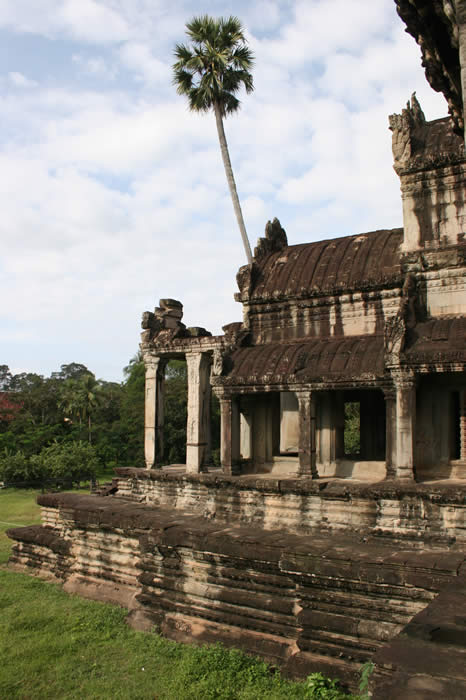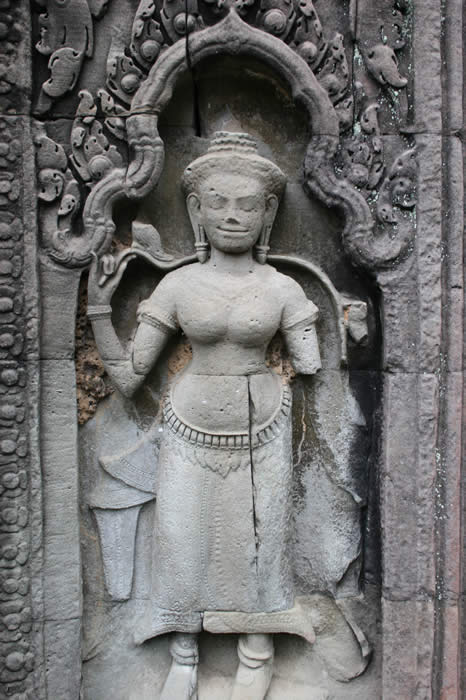and surrounding areas a series of photographs by Lee van Laer Located in Siem Reap, Cambodia, Angkor Wat is the world's largest religious building, surrounded by one of the world's largest temple complexes. The surrounding area has many thousands of related structures, representing one of the most densely populated lost civilizations in the world. Having left few written records, and few reports from outside societies about their activities or culture, it has been left to later civilizations to interpret what they can from the ruins. Angkor society displayed a world-class mastery of architecture, engineering, agriculture, water management, stonework and sculpture. Their ceremonial buildings contain some of the richest legacy of religious symbolism in the world. The intention of this webpage is to introduce readers to a visual impression of the area. Abundant links will be provided for those who want to read about it in more detail. |
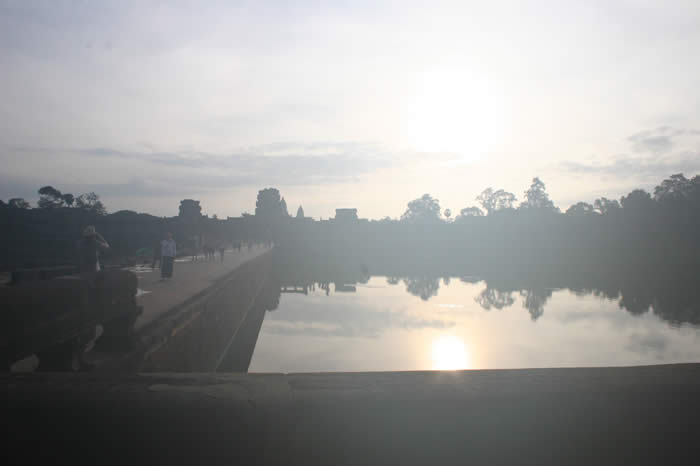 |
Early morning. A long causeway leads over the moat around the central temple It's best to get a very early start to the ruins, as the hordes of tourists increase steadily over the morning. Those who get in first will have the quietest, most leisurely experience. Water management was a major part of the development, and eventual collapse, of Angkor civilization. |
 |
A view of the main temple through the door of the first building. |
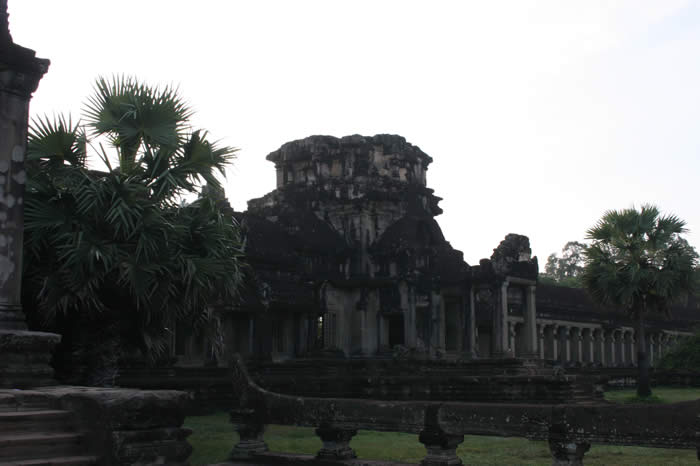 |
The outlying walls and gate of the temple complex. In the foreground is a balustrade in the form of a Naga, or serpent. Balustrades of this kind are a typical feature of Angkoran architecture. |
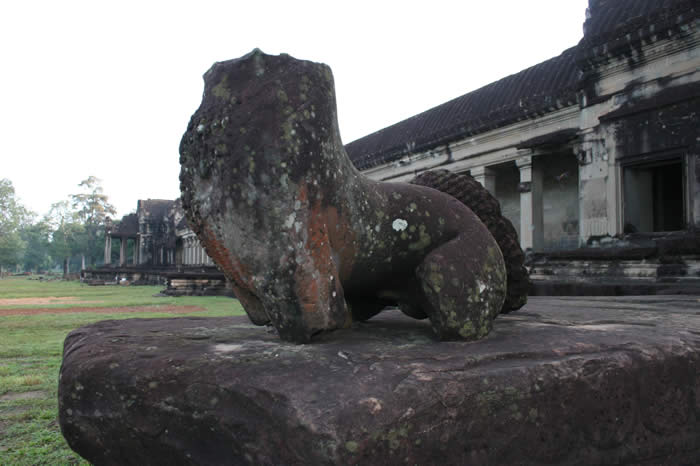 |
Fragment of a lion standing guard. |
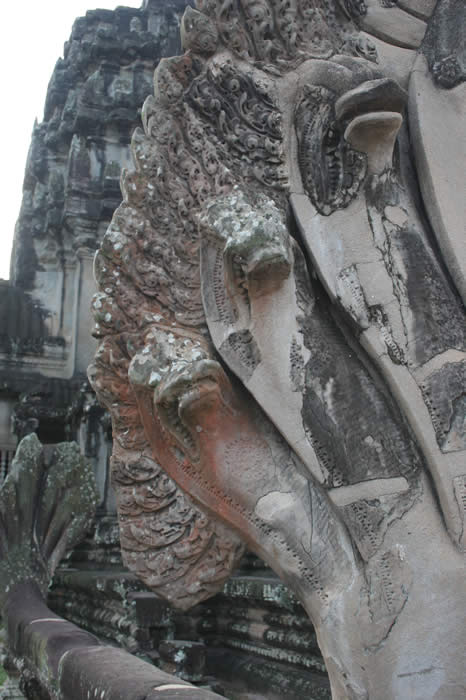 |
The dramatic sweep of a hooded naga, from the head of the balustrade. The naga is rich with esoteric religious symbolism, related to the Hindu practice of kundalini yoga. It also plays a role in the enlightenment story of the Buddha–not a surprise, since the Buddha intensely practiced esoteric yoga before he attained enlightenment. |
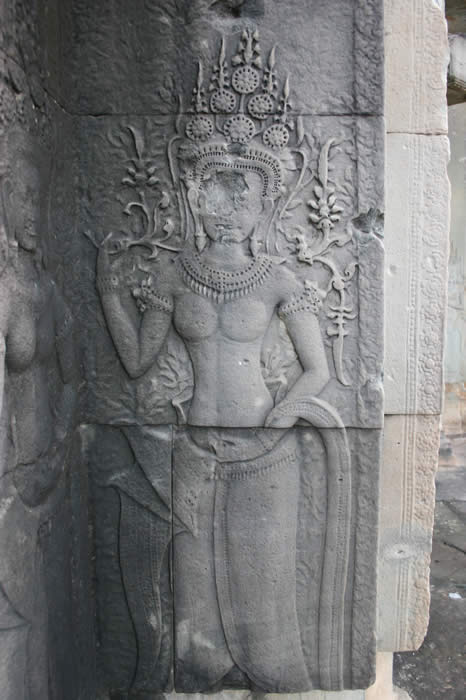 |
Apsaras decorate doorways and walls throughout the Angor temple complex and associated period structures. These supernatural female dancers are shape-changers, wives of the Ghandarvas, the musical court servants of the demiurge Indra. The 1,796 apsaras in the Angor complex appear to be uniquely indivdual characters, leading reaserachers to believe that each one was modeled after an actual living woman. The inference is that women played a far more important role in Angkor society than was previously thought. |
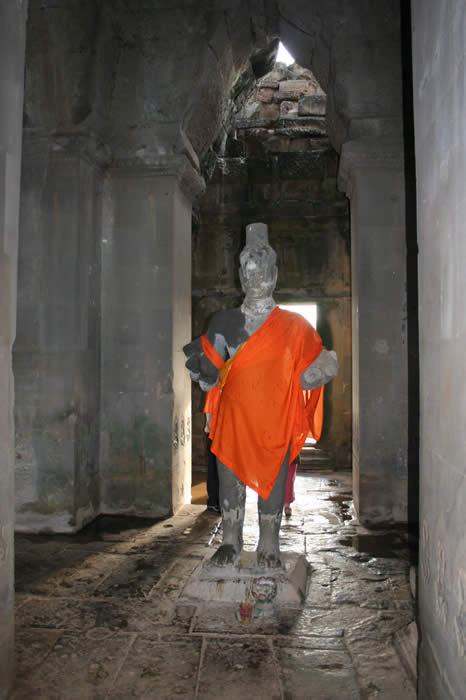 |
Today's Cambodia is almost exclusively a Buddhist nation (with minority populations of Muslims and Christians) but this was not always the case. The founding populations of the Angkor civilization were Hindu, and the society seesawed back and forth between Hinduism and Buddhism for centuries, with repeated wars. Many Buddhist images were destroyed during these periods. Here we see a Hindu image dressed Buddhist robes; it's a common practice to honor ancient images through current religious practice, as we will see in subsequent photographs. |
 |
A view of the central temple complex. One of the so called “libraries" can be seen in the foreground. These structures were definitely not libraries at all--no one is quite sure what they were used for--, but French archaeologists named them so during the initial excavations in the '30s, and it has stuck. |
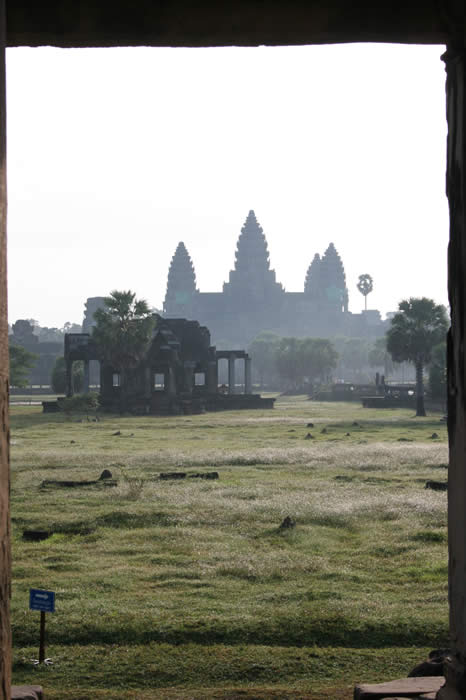 |
Another view of the temple complex. |
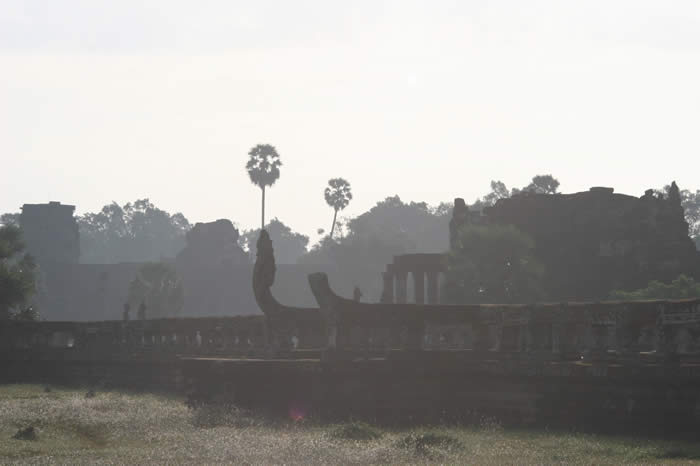 |
A long stone causeway leads from the main gates to the central temple area. Naga- decorated balustrades are a regular feature here, as elsewhere at Angkor period temple complexes. |
 |
Looking back towards the gate through the outside wall of the complex. |
 |
The causeway is an impressive structure that effectively dramatizes the majesty of the central buildings. Here you can see the libraries flanking it on either side in the distance. The balustrades on either side are meant to represent the bodies of enormously long nagas. |
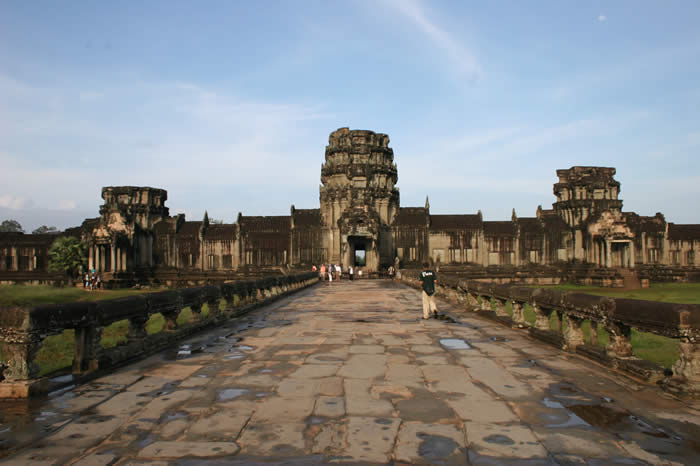 |
This photograph is taken looking westward, in the opposite direction of the temple. The westward orientation is uncharacteristic; it has been suggested that this indicates Suryavarman intended it as his funeral complex. |
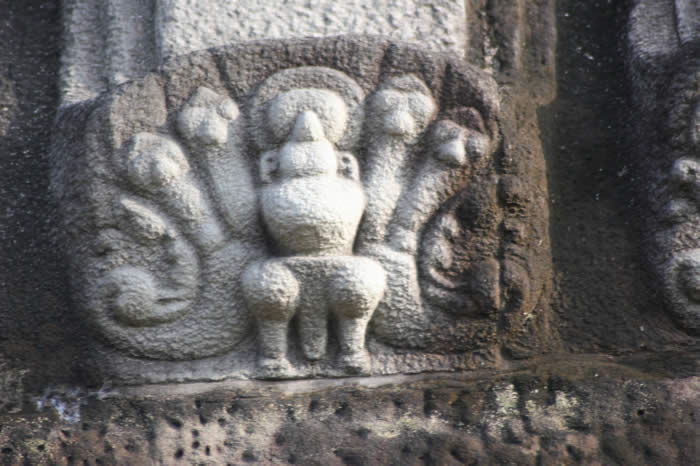 |
The grand scale of the architecture here is complemented by tens of thousands of tiny, imaginative details. This is a slightly abstracted representation of a naga. The central snake seems to have been replaced with a lion motif. |
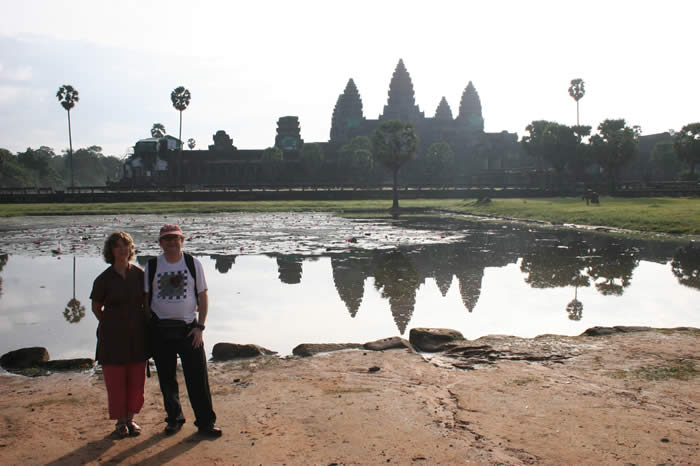 |
Neal and I pose in front of one of the small ponds to the West of the central temple complex. |
 |
As in many other Asian cultures, lions feature prominently in the imagery. Many of them have suffered serious damage and erosion over the centuries. Nonetheless, the lion motif is still considered to be one of the most important traditional symbols in both Thai and Cambodian culture. |
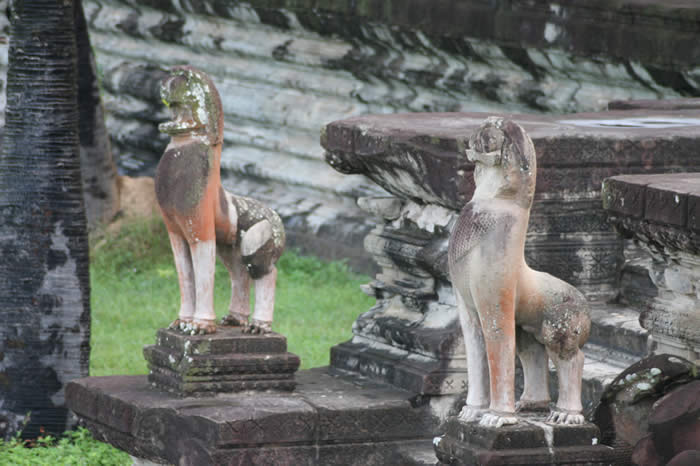 |
More lions. |
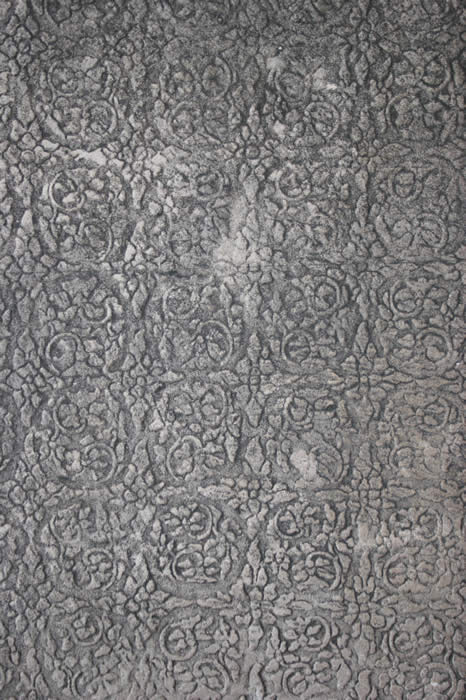 |
Many stone surfaces in the complex are covered with a staggering amount of carved detail. |
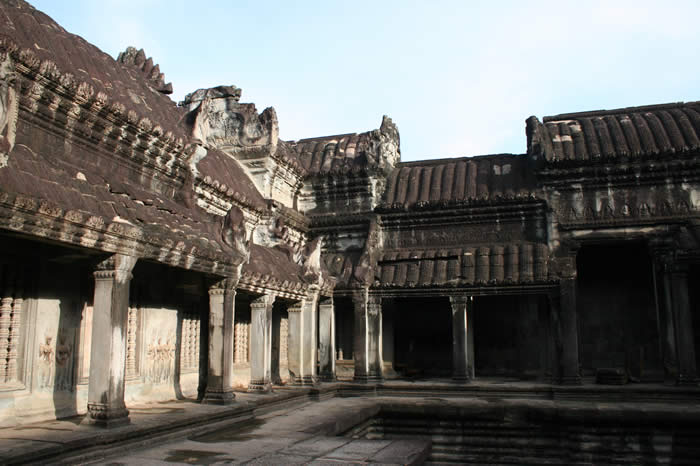 |
Inner area of the central complex |
 |
it's not uncommon to see monkeys grooming one another around the temple. |
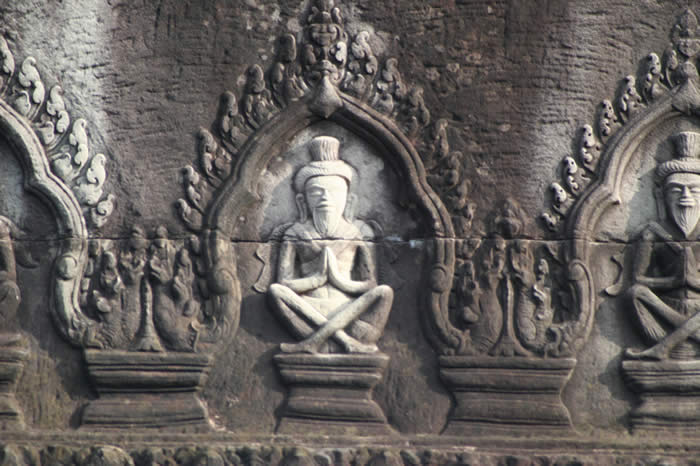 |
A hermit. These stylized images of holy men can be found throughout the temple complex. |
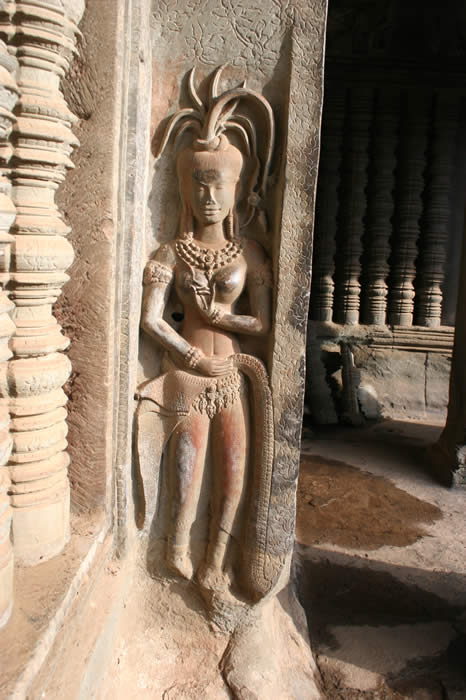 |
An apasara. Nudity is not approved of in modern Cambodian culture–which is in many ways very conservative– but its presence in ancient imagery is respected. |
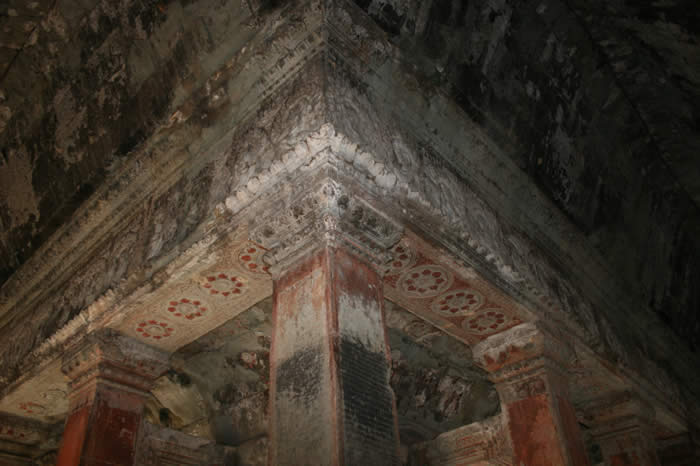 |
A detail of a Temple interior. Odds are that Angkor Wat, like most ancient structures, was brightly painted. Our modern impressions of buildings such as the Parthenon, Gothic cathedrals, and so on bear little relationship to what they must have looked like in their heyday. |
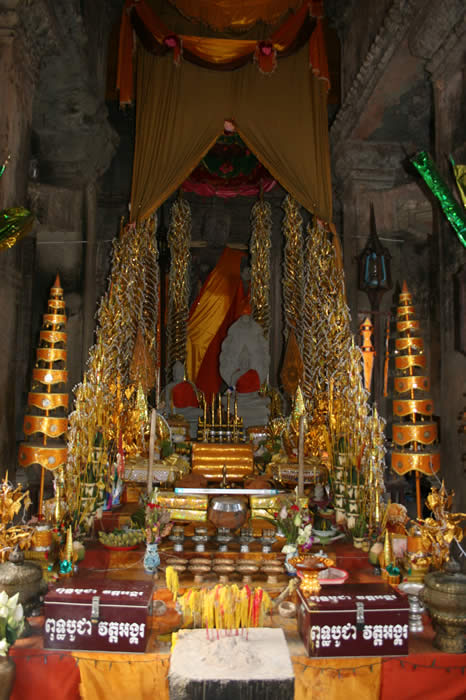 |
A modern Buddhist shrine inside the temple. At the back of the shrine, a bit difficult to see, is a piece of statuary dating from the original construction. It is wearing the traditional role of the Buddha. |
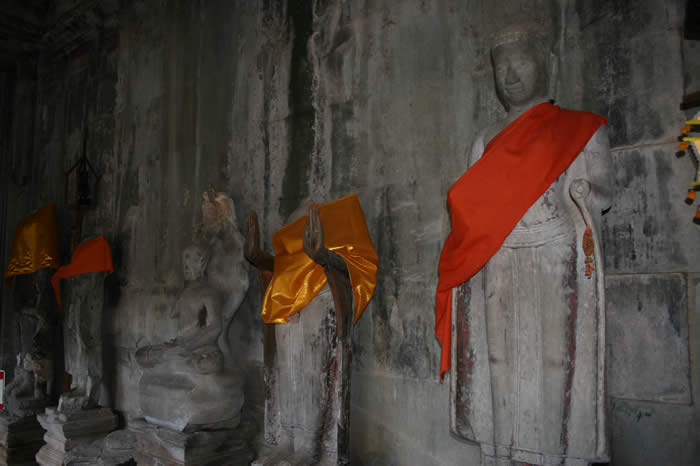 |
More ancient statuary honored with modern robes. As you can see, even fragmentary statues are worthy of veneration. |
|
Structures at the back of the main temple |
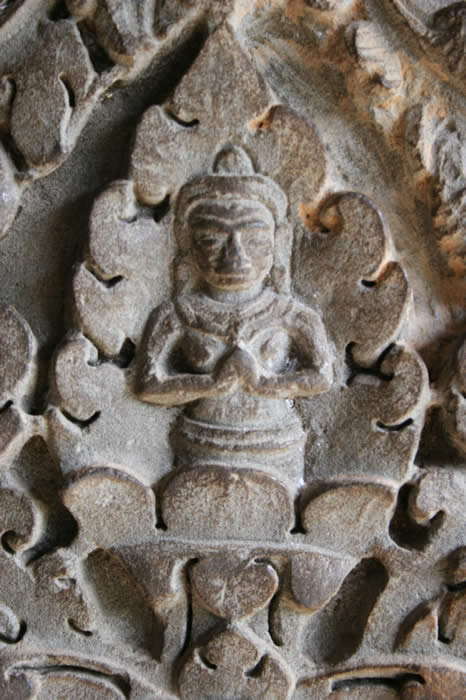 |
Hermit detail |
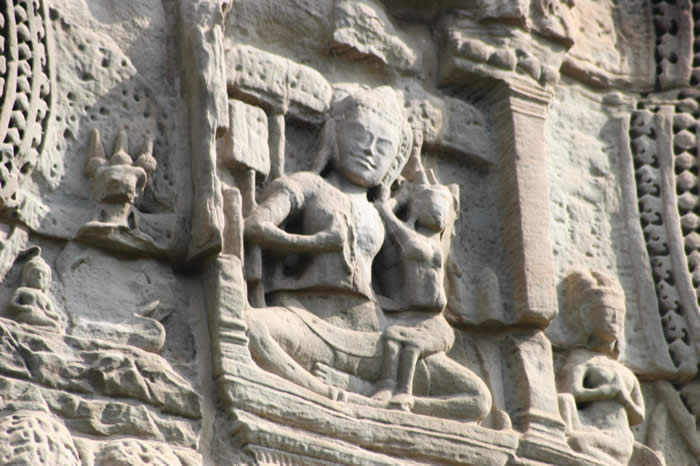 |
Elaborate carvings adorn the exterior. |
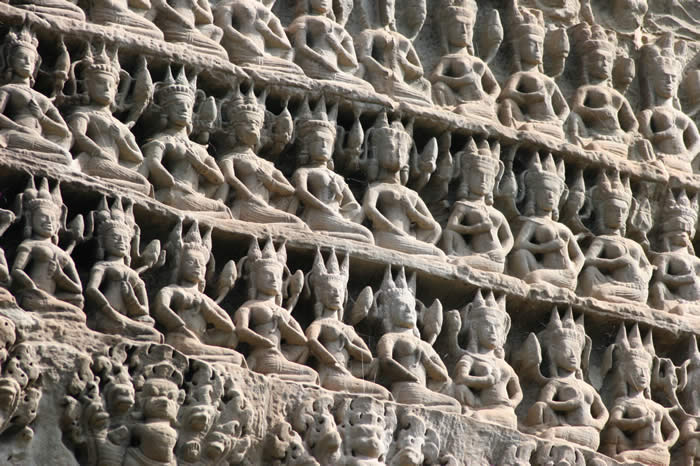 |
Repeated images of angels and worshippers are a typical motif. |
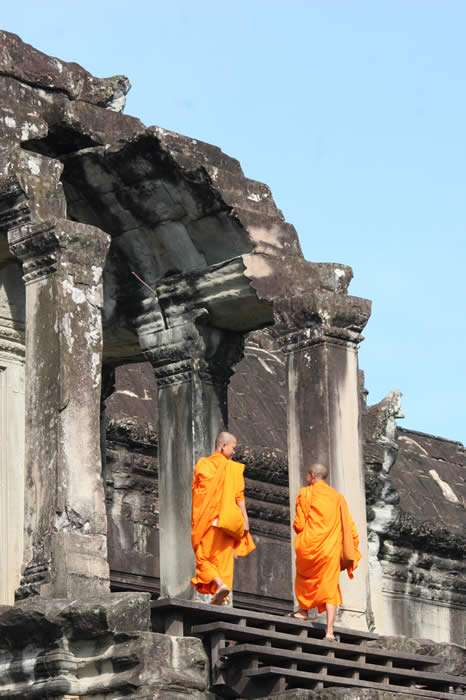 |
Monks enjoy visiting Angkor, like anyone else! |
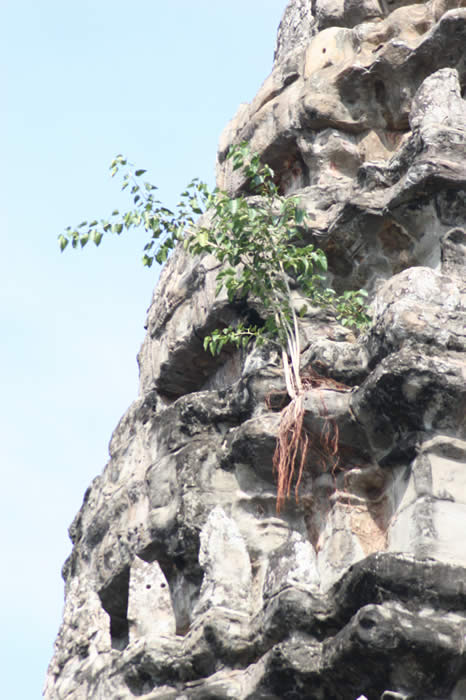 |
Even in meticulously kept locations, tropical foliage finds footholds. |
 |
Curtains of carved columns are a regular feature of temples. |
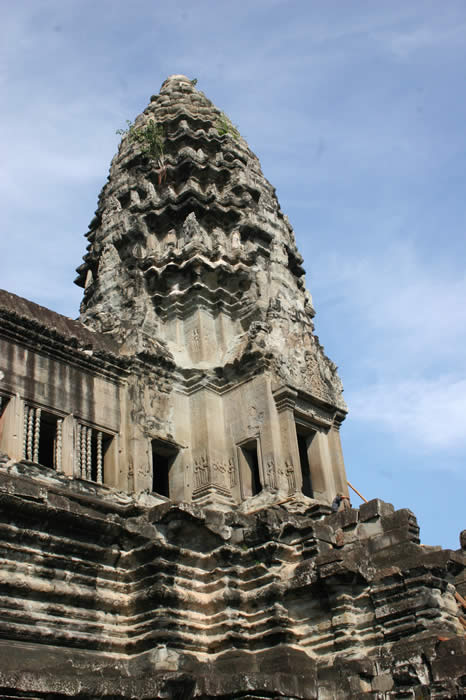 |
a tower at the back of the complex |
 |
Monkeys |
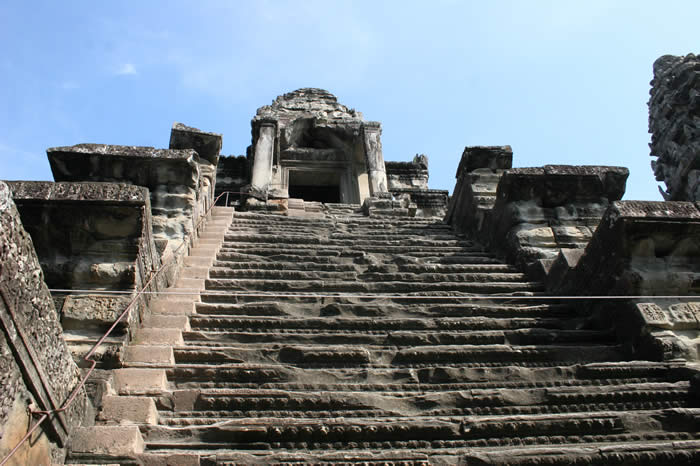 |
Staircvases at Angkor are generally very steep. |
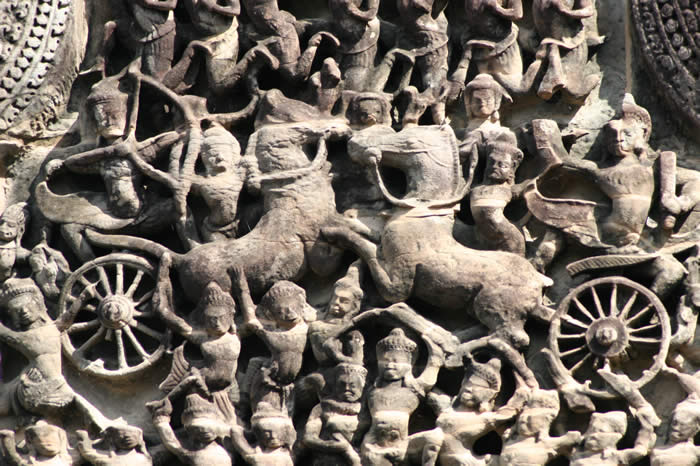 |
Chariot battle featured on the lintel of a doorway. |
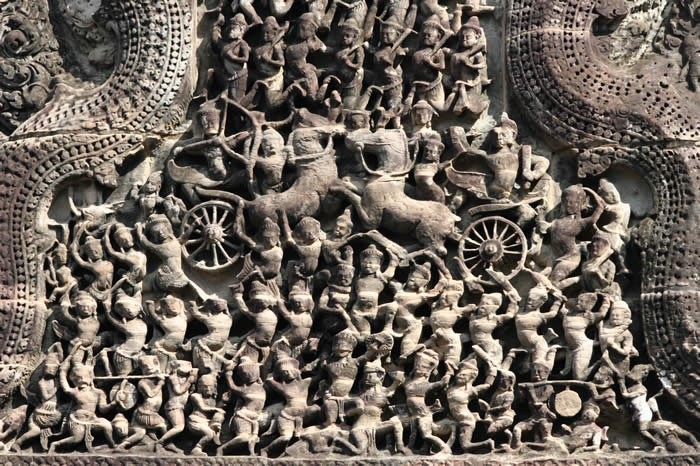 |
The amount of detail is staggering, even on a single lintel. |
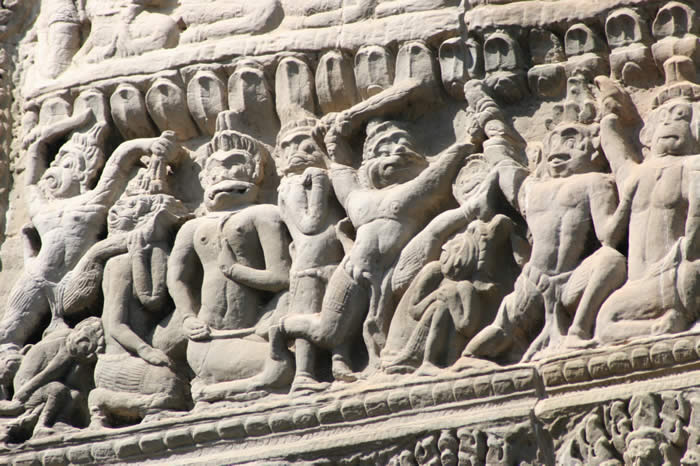 |
Violent conflict, but with comical characters (see the right side) |
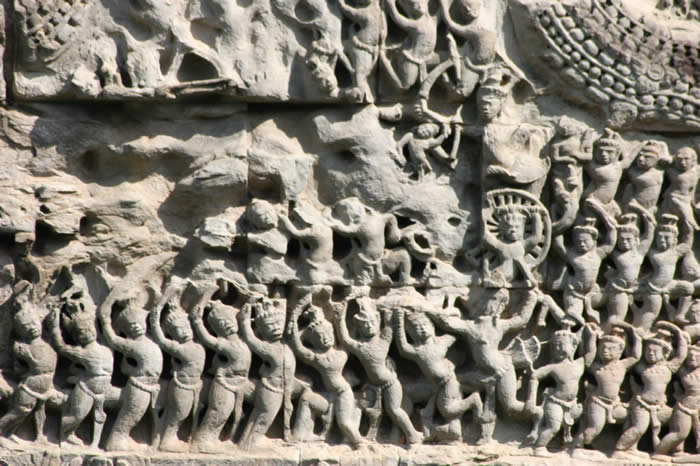 |
How did they do this? With a great deal of patience and skill. |
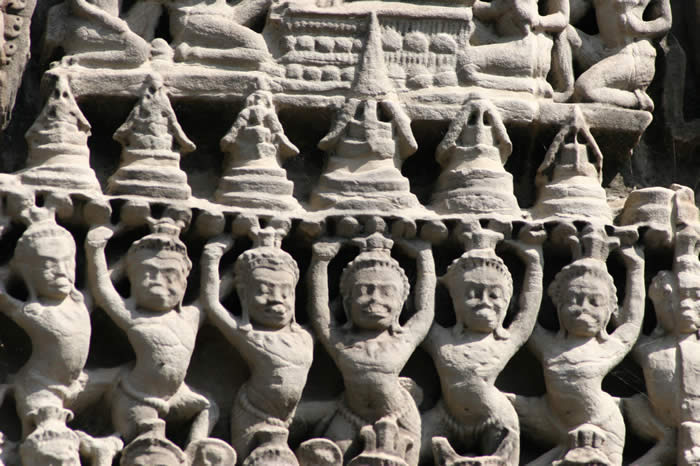 |
levels support other levels |
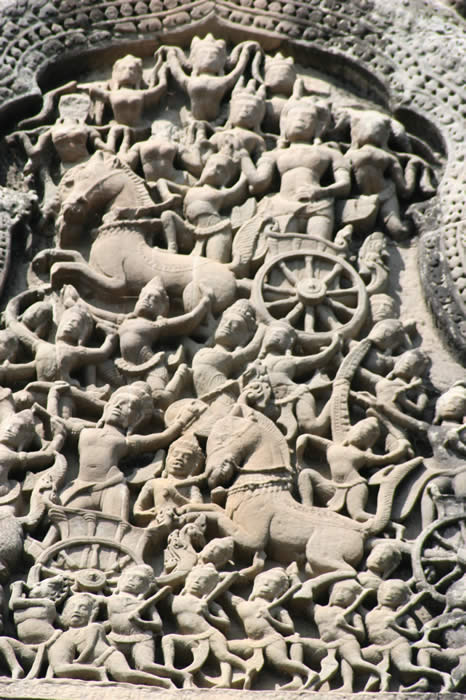 |
Another lintel |
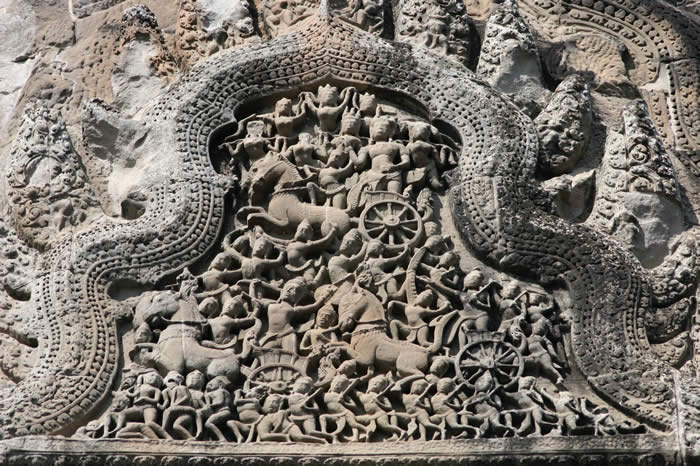 |
The lintel, seen in its entirety |
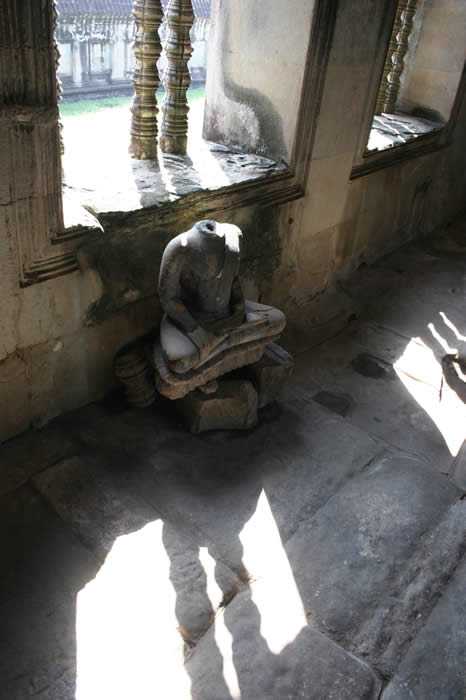 |
A cryptic headless Buddha in a back room. Many statues were defaced in this way, either by vandals or looters. |
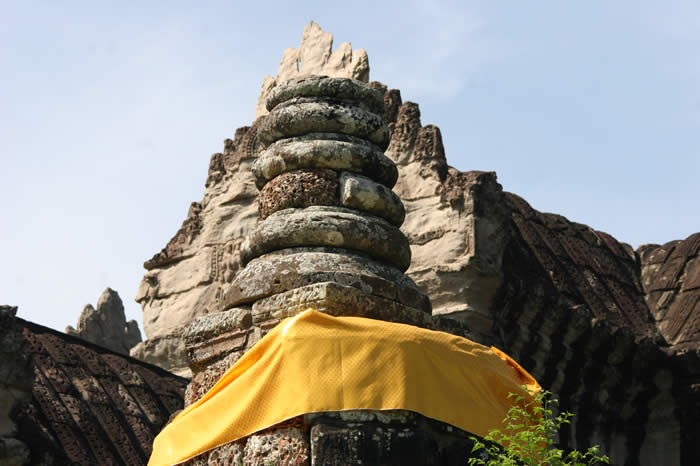 |
Stupas are honored with cloth decoration. |
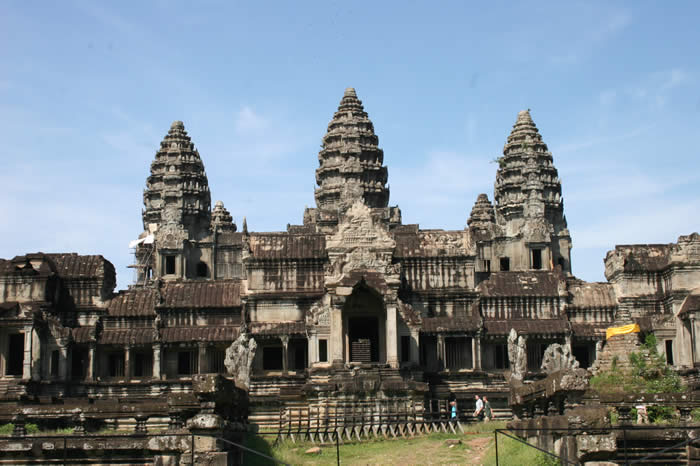 |
The temple, as seen from its back side, facing west. |
|
Nefersweetie an incidental web space created and supervised by Lee van Laer |
